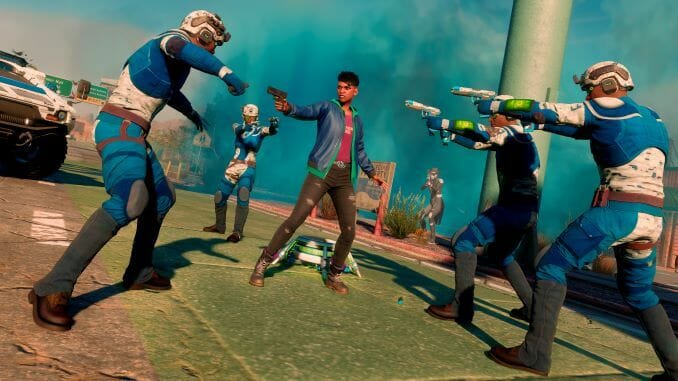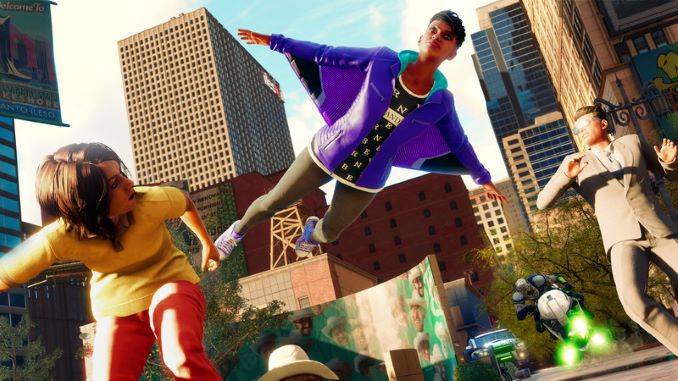
By my count, Saints Row is on its third reinvention. The first occurred when Saints Row: The Third turned the series into a full-blown satire, ditching the original installments’ gritty gangster stories. The second took place a game later, when Saints Row IV ditched most preconceived notions of what a Saints Row game should even be. Now with some distance from that experiment, Saints Row has reinvented itself once more into something immediately familiar, but how exactly does that land all these years later?
Well, I really like it. I’ve said it time and time again, but Saints Row is the sequel I more or less expected from one of my favorite series 10 years ago. After previewing it twice all that was left was to dig into the whole package and see if it lived up to my admittedly tempered expectations. It mostly meets them, though in being deliberately familiar, Saints Row does feel held back by a tendency to play things a little too safe.
For example, much has been made of the new setting and Saints. I really enjoyed both, but still feel I could’ve used more from either at any given point in the game. Saints Row sort of establishes a similar rhythm to past games, where you report to lieutenants who have some tie to the gang they are giving you missions for. In essence, the questline should play out like an arc where both are developed and fleshed out. Saints Row 2 really nailed this in particular, dealing dramatic blows to the protagonist as they and their foes went back and forth. However, this development is only gestured at in the new Saints Row. Most of its villains are barely onscreen and our heroes each get precious few moments to shine as characters rather than fellow gunmen. Neenah, the Saints’ gearhead, has a moment where she opens up about a personal tragedy and delves into her family and background as an immigrant for all of 10 seconds before mostly never mentioning it again. Kev, your DJ/backup muscle/influencer, similarly teases a history he literally never makes mention of again, and considering his plotline is the most undeveloped of the three, that brief moment is all we get to connect with him. This new iteration of the Saints is supposed to be more reflective of people who are pushed to the margins, but while they walk and talk like it, they rarely embody it. Eli, the brains behind the Saints operation, benefits the most from a questline I won’t spoil that also embraces Santo Ileso’s motto “Keep It Strange, Santo,” an obvious play/dig at “Keep Austin Weird.” However, even this is about as strange as Santo Ileso gets, with the exception of some tertiary content that introduces the idea of the city having a run in with some werewolves? Even this though would’ve been better had it been implemented more diegetically in the main script. Instead it lives in the shadows, where it hardly impresses.

Despite these reservations, I still cared for Santo Ileso and its crew more than I ever felt for Steelport and the Saints that took it over. Santo Ileso is just literally brighter, touting a palette swap and a Vegas equivalent in its El Dorado district that shake things up visually. Even just drifting through the Badlands to the south at sunset puts into stark perspective how much of a step up Saints Row feels like purely in terms of place. And then there are the cultural textures, including the acknowledgment of Latine people and art, that bring it home for me. There are other small touches, like the overwhelming amount of pickup trucks and how boots seem to be the default wear, that at least make Santo Ileso feel like a distorted version of the American Southwest that’s still in touch with its inspirations. On the other side are your friends who turn out to be the surprising heart of the story. While their individual appearances could arguably be better, and their characters could be fuller, their dynamic rarely lets slip that these are anything but the closest of friends. The game actually goes out of its way to make sure that players know how much they mean to the main character, especially as the game nears its conclusion. It’s tender in a way Saints Row has never really allowed itself to be, and it’s the most obvious way the game stands apart from the titles before it.
That’s because in most every regard, Saints Row is exactly what came before it. It’s another game in another setting with objectives to blow up, factions to fight, and side activities to partake in for cash. Some might’ve changed ever so slightly (traffic in Insurance Fraud isn’t quite as comically menacing as it used to be), and some might be gone forever (I’ll miss you, Crowd Control), but for the most part, Saints Row has a solid lineup of things to do that rarely, if ever, border on excess. It’s actually the rare open-world game that’s a smidge lean on extracurriculars. There are 30+ main missions that are rarely gated behind side activities (broken up between a handful of shorter side hustles and 14 slightly bigger criminal ventures), meaning you’ll get through the game if you just spend a lazy weekend with it, and I can’t recommend that more. Additionally, there’s co-op functionality, so you can have fun tearing through the game with a friend if you so choose. Down to the blemishes and technical hiccups—because you can’t be a Saints Row game without them—this game honors the legacy before it incredibly tightly.
There’s tons more about Saints Row to unpack, like its incredibly robust character customization or its underutilized perk system, but if you’ve played an open world game or Saints Row title before, I’m just confirming stuff you mostly knew about the game. This is Saints Row’s third reinvention and fifth mainline title since 2006, and despite those numbers, we’re still largely in the same place we’ve always been. Being there is a comfort, sure, but it’s beginning to feel like going through the motions over and over again.
I’ve argued before that I’m glad this game exists independent of what most other open-world games currently are and I stand by that. I’ve had more honest, mindless fun blasting the radio and sideswiping cars in Saints Row than I think I have in most other games of this ilk in the past decade. However, I do wish it wanted to be something more. It could be, and I constantly see it on the fringes of this game. Reinvention can just as easily be a prompt for a bold new swing, and while Saints Row feigns one or two, it could stand to commit more fully to them. This retooling/reboot/reenvisioning doubles down on the past in an intentional, if short-lived, nostalgia play, but there has to be more there, right? If we should see more of these Saints—and I earnestly do want to—I would hope it would be with something fresh to say or show. Until then, Saints Row still has some growing to do.
Saints Row was developed by Volition and published by Deep Silver. Our review is based on the Xbox Series X|S version. It is also available for PlayStation 5, PlayStation 4, Xbox One, PC, and Stadia.
Moises Taveras is a former intern for Paste Magazine. He was that one kid who was really excited about Google+ and is still sad about how that turned out.